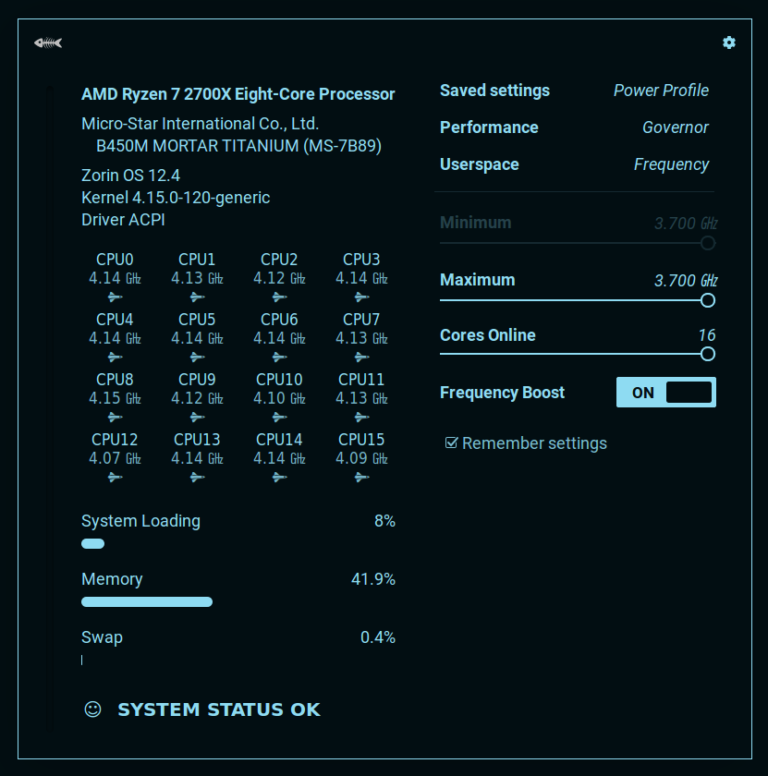
# Wait until the home LV device node exists:ĭo echo "Waiting until $home_LV_device exists (retrying in 1 second)" $LV_make_filesystem_command $root_LV_device # Wait until the root LV device node exists:ĭo echo "Waiting until $root_LV_device exists (retrying in 1 second)" # Wait until the swap LV device node exists:ĭo echo "Waiting until $swap_LV_device exists (retrying in 1 second)" Lvcreate -verbose -yes -autobackup n -size $lvm_LV_home_size -name home $lvm_VG

Lvcreate -verbose -yes -autobackup n -size $lvm_LV_root_size -name root $lvm_VG Lvcreate -verbose -yes -autobackup n -size $lvm_LV_swap_size -name swap $lvm_VG # Create logical volumes in the existing volume group: Vgcreate -verbose -yes -autobackup n $lvm_VG $lvm_PVs # Create a single volume group of all PVs (i.e. # Initialize all partitions for use by LVM as PVs: Grep 'use_lvmetad = 1' /etc/lvm/lvm.conf & sed -i -e 's/use_lvmetad = 1/use_lvmetad = 0/' /etc/lvm/lvm.conf # Because /etc/lvm is read-only it is moved away and a writable copy is created: # Do not use lvmetad in the SUSE installation system to avoid many confusing warning messages from LVM tools. # so that automated metadata backup is disabled with '-autobackup n'. # and any backups that are stored inside the SUSE installation system are useless # LVM metadata cannot be backed up (to /etc/lvm) because /etc/lvm is read-only in the SUSE installation system # Wait until all partition device nodes exist:ĭo echo "Waiting until $partition_device exists (retrying in 1 second)" # Report what is actually set up by parted:ĭo parted -s $harddisk_device unit GiB print Parted -s $harddisk_device set 2 lvm on type 0x8e Parted -s -align=optimal $harddisk_device unit % mkpart primary ext2 $partition2_begin_percentage $partition2_end_percentage Parted -s $harddisk_device set 1 lvm on type 0x8e Parted -s -align=optimal $harddisk_device unit % mkpart primary ext2 $partition1_begin_percentage $partition1_end_percentage

# Use hardcoded parted fs-type "ext2" as dummy for now regardless what filesystem will be actually created there later: Parted -s $harddisk_device mklabel $harddisk_disklabel The new disk label will have no partitions: # Erase filesystem, raid or partition-table signatures (magic strings) to clean up a used disk before making filesystems: # Make partitions on the harddisk devices:ĭo # Wait until the harddisk device node exists:ĭo echo "Waiting until $harddisk_device exists (retrying in 1 second)" # First of all clean up possibly already existing partitions:ĭo test -b $partition & wipefs -a -f $partition || trueĭo test -b $harddisk_device & wipefs -a -f $harddisk_device || true LV_make_filesystem_command="mkfs.$LV_filesystem -F" Partition2_begin_percentage="$partition1_end_percentage" Harddisk_devices="/dev/sda /dev/sdb /dev/sdc"
#WIPEFS FORCE PLUS#
Plus proper waiting for block device nodes according
#WIPEFS FORCE INSTALL#
(my quick and ditry hack to install a system with LVM) Here some excerpts from my newest generic installation script Install Date: (not installed) Build Host: lamb10 Name : rear Relocations: (not relocatable) This was on SLES12SP1, with rear 2.00 package from OBS: After I hit 'y' on console, restore process continues. This prompt is visible in the log file, but not on system's console, there is just an empty line with a blinking cursor. Wipefs: Use the -force option to force erase. Wipefs: /dev/sda1: ignoring nested "dos" partition table on non-whole disk device +++ echo -e 'Creating filesystem of type ext3 with mount point /boot on /dev/sda1.' +++ Print 'Creating filesystem of type ext3 with mount point /boot on /dev/sda1.' 14:36:14 Creating filesystem of type ext3 with mount point /boot on /dev/sda1.

p, -parsable Print out in parsable instead of printable format.During a restore, depending on what condition the target disk is in, wipefs will sometimes not wipe existing filesystem from the block device, and subsequent mkfs will stall the whole process, by interactively asking for confirmation: It is possible to specify multiple -o options. The offset number may include a "0x" prefix, and then the number o, -offset offset Specifies location (in bytes) of the signature which should be erased from the device. n, -no-act Causes everything to be done except for the write() call. Options -a, -all Erase all available signatures. Without options -a or -o, it lists all visible filesystems and offsets of their signatures. wipefs does not erase the whole filesystem or any other data from the device. Wipefs allows to erase filesystem or raid signatures (magic strings) from theĭevice to make the filesystem invisible for libblkid.


 0 kommentar(er)
0 kommentar(er)
